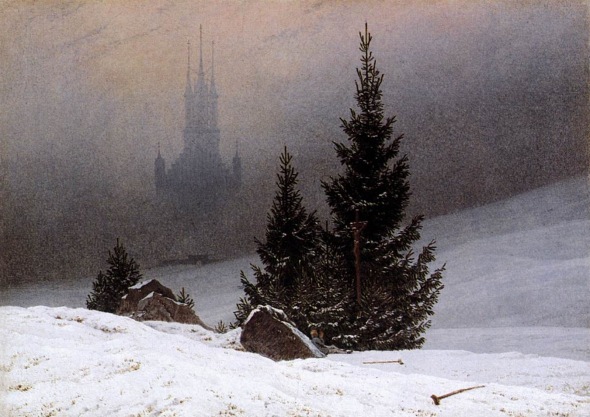While the original intent of this blog was to highlight meaningful moments in art–most specifically in music–what I’ve ended up doing more often than not is describing passages of music that are longer than a mere moment. This post, though, actually is about one moment, about one single note.

O Magnum Mysterium is a responsorial chant sung at Christmas. Over the years, dating back to the Renaissance, many composers have set this text to music. In 1993, American composer Morten Lauridsen (b. 1943) received a commission from the president of the Los Angeles Master Chorale for a piece that would have its première at the Master Chorale’s Christmas concert in 1994. For his text he, too, selected O Magnum Mysterium, the Latin and English versions of which are below.
O magnum mysterium,
et admirabile sacramentum,
ut animalia viderent Dominum natum,
jacentem in praesepio!
Beata Virgo, cujus viscera
meruerunt portare
Dominum Christum.
Alleluia.
O great mystery,
and wonderful sacrament,
that animals should see the new-born Lord,
lying in a manger!
Blessed is the Virgin whose womb
was worthy to bear
Christ the Lord.
Alleluia.
In an article he wrote for The Wall Street Journal in 2009, Lauridsen noted:
“The most challenging part of this piece for me was the second line of text having to do with the Virgin Mary. She above all was chosen to bear the Christ child and then she endured the horror and sorrow of his death on the cross. How can her significance and suffering be portrayed musically?
After exploring several paths, I decided to depict this by a single note. On the word “Virgo”, the altos sing a dissonant appoggiatura G-sharp. It’s the only tone in the entire work that is foreign to the main key of D. That note stand out against a consonant backdrop as if a sonic light has suddenly been focused upon it, edifying its meaning. It is the most important note in the piece.”
Frankly, I’m envious of those of you who will now hear this piece, and that otherworldly appoggiatura G-sharp, for the very first time. In this 2009 performance at King’s College, Cambridge, the moment comes twice, at 3:11 and again at 3:38. In the same WSJ piece, Lauridsen said that, “in composing [this ] music….I sought to impart…a transforming spiritual experience within what I call “a quiet song of profound inner joy.” I wanted this piece to resonate immediately and deeply into the core of the listener, to illumine through sound.”
I think he succeeded. See what you think. And Merry Christmas.

Yes, that note certainly is far from subtle, isn’t it — in an instant the simple, muted joyousness is momentarily transmuted to carry us to that place of futureanguish. In this performance, I also love the purity (so difficult for a choir to accomplish!) of the multi-vocal sound on the second syllable of “mysterium,” and the beautifully clear-but-subtle distinction (non-elision) of the “t” at the end of “viderent” into the “D” of Dominum.
I speculate that dearth of commentary (which you’ve mentioned in the past; I hope that’s changed) reflects awe at your scholarship. The research — and emotions — you share leave little else to be said…
LikeLike
Thanks so much for your thoughtful comments, Kristina.
LikeLike
Not sure I’m up to tackling the music, but may I comment on the art? I recall an earlier post where you wrote about CD Friedrich and a romantic boating incident. At the time I was puzzled because the only Caspar I had seen – and been spellbound by at the National Gallery – was filled with yearning melancholy wintriness. It was, in fact, the above landscape. Fantastic to see it again. It is a wonderful painting.
LikeLike
Thank you Bruce! Comments, of course, are welcome on any and all art forms on display. In thinking about doing a post on O Magnum Mysterium, the very first painting that popped into my head–despite the fact that the music is about the Nativity–was this Friedrich winterscape: the snow, the fir trees, the church looming in the mist…it all fit for me. (In the end, to a be a completist, I added the piece from the Uffizi.)
LikeLike
Jeanne, most bloggers occasionally hit a high note, but when I read your posts, I am sustained by one high note after another. This one is particularly beautiful and leaves me in tears. I have not heard this piece before, but I can’t imagine that any other composer (or performers) could better capture the beauty, joy, quiet, and other-worldliness of Christmas. Love and peace to you, my friend.
LikeLike